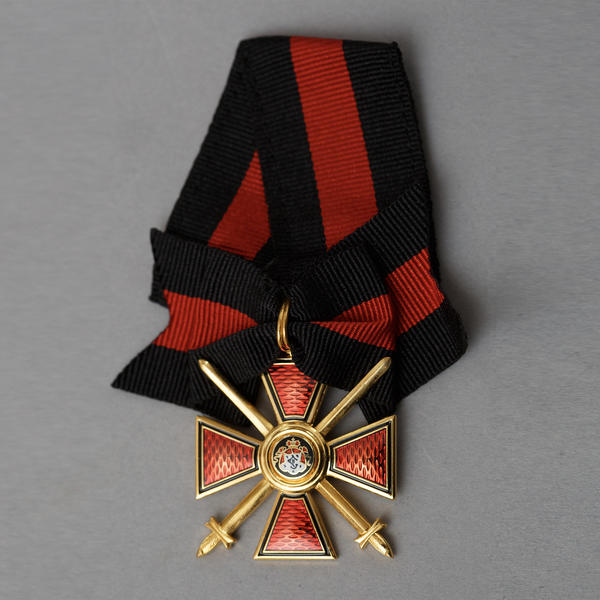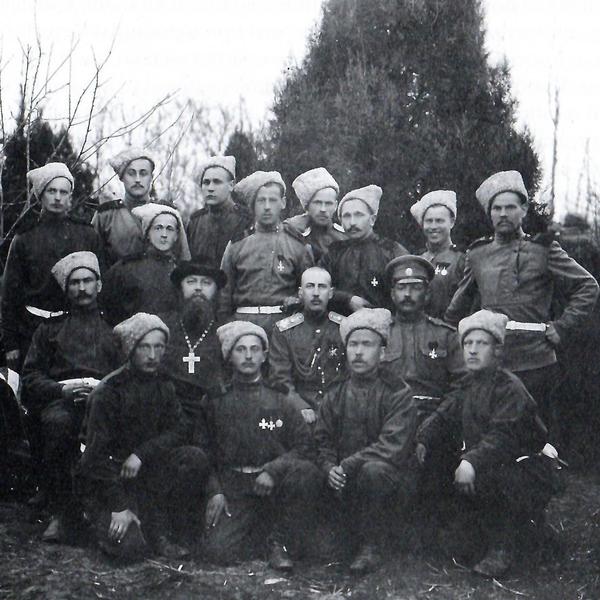The museum collection has a modern copy of Ioann Konstantinovich’s award. A Prince of the Imperial Blood, he went to the front right after the beginning of the First World War. He took part in battles in East Prussia and, for his military merits, was awarded the Order of Saint Vladimir 4th Degree with Swords and a Bow.
1 / 2
Order of Saint Vladimir 4th Degree
Creation period
Modern copy
Dimensions
4,3x3,4 cm
Technique
Enamel on metal
0
Open in app#1
Order of Saint Vladimir 4th Degree
#4
#5
This decoration of 4 degrees was established by Empress Catherine II at the end of the 18th century. It was introduced to mark 20 years of her reign. It was named in honour of Saint Vladimir, an outstanding military commander and Baptiser of Rus’ who was one of the first to adopt Christianity. In ballads and legends he was referred to as Krasno Solnyshko [the Radiant Sun] (Vladimir the Fair).
#2
The St. Vladimir Order consisted of a decoration, a star and a ribbon. It was given for special merits to civilian people or for merits in the battlefield to military people. The higher degrees were awarded only to generals, while the 4th degree could be given to any military officer. When the Order was awarded for deeds at the front, more attributes were added - crossed swords and a special fold of the ribbon, a ‘bow’. Military officers valued the Oder of the 4th degree with a bow more than higher-degree orders because it was given only for personal bravery and combat skills. That was the decoration Prince Ioann Konstantinovich was honoured with.
One of the last photographs of Prince Ioann Konstantinovich from the front. 1916. Source: GA RF
#6
From the 19th century, the St. Vladimir Order, irrespective of the degree, guaranteed hereditary noble estate. The decoration, however, was often given to major industrialists and merchants for charity. Therefore, a decree was issued in 1900 under which the 4th degree entitlement was only individual noble estate but not hereditary.
#7
The junior degree was also awarded for a certain length of service, 35 years. In that case, the inscription ‘35 years’ in gold or silver was made on the face of the order. The place where the different degrees were to be worn was strictly regulated: the 4th degree cross was affixed to the tunic on the chest.
It was forbidden to add precious stones to the decorations or wear them in any fashion other than what was prescribed by the rules. The order came with an annual pension, the amount of which varied subject to the decree but was fairly handsome by the standards of those times.
#8
Sverdlovsk State Regional Ethnography Museum
read morehide
00:00
00:00
1x
Order of Saint Vladimir 4th Degree
Creation period
Modern copy
Dimensions
4,3x3,4 cm
Technique
Enamel on metal
0
Open in app
Share




